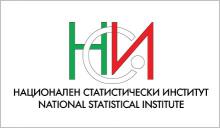In March, the National Statistical Institute of Bulgaria launches conducting of the survey on ‘Social Inclusion and Living Conditions 2022’.
Regulation No. 2019/1700 of the European Parliament and the Council establishes a common framework for European statistics relating to persons and households, based on data at individual level collected from samples. The Survey on Income and Living Conditions (SILC) is part of the surveys included in the regulation and refers to the collection of comparable and timely information on the current state and dynamics of income, as well as the level and structure of poverty and social exclusion at national and European level.
The following thematic areas are included in the methodology of the survey:
- Basic demographic and social characteristics of the households and their members: household size, form of ownership of dwelling, age, gender, education, marital status, economic status and other data on household members.
- Monetary (financial) indicators on income and social stratification of the population: total income and the structure of income sources (wages, social transfers and others).
- Non-monetary (non-financial) indicators of living conditions: basic data on housing conditions (type and furnishing of the dwelling); problems relating to housing and neighborhood (location); access to education; health status and access to healthcare.
- Economic activity, employment and unemployment of persons aged 16 and more (status, job security, duration of unemployment and others).
- Social services and programs and the participation of the household or its members in them.
The survey is conducted over a six year rotating panel of private households. Except from the household which has been selected into the sample object of observation are also all its members aged 16 and more. Every year the panel sample size is around 9200 private households distributed in all areas of the country. The sample consists of six rotational groups and each year one of the rotation groups is dropped and replaced with a new one. This rotation pattern of a sample provides two types of data:
- Cross-sectional (as of the year of observation);
- Longitudinal (data for households participated in at least two consecutive years).
In the March - May 2022 period the selected households will be visited by specially trained interviewers to conduct personal interviews and fill in two questionnaires - Household questionnaire and Personal questionnaire. Households are included in the sample using a random selection which ensure the representativeness of the results.
The survey is conducted in all EU member states using common methodology and tools. The obtained results contribute to the assessment of living conditions in the different countries, the structure and distribution of household income and their participation in the social life of the country.
We would like to thank in advance to all households for the cooperation!
More



